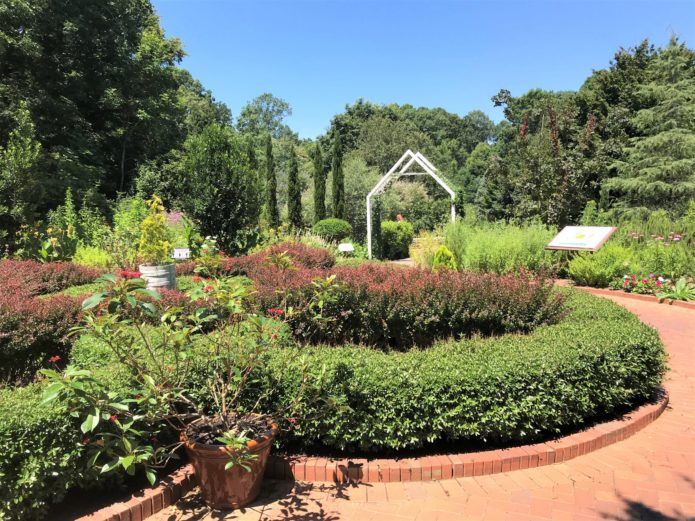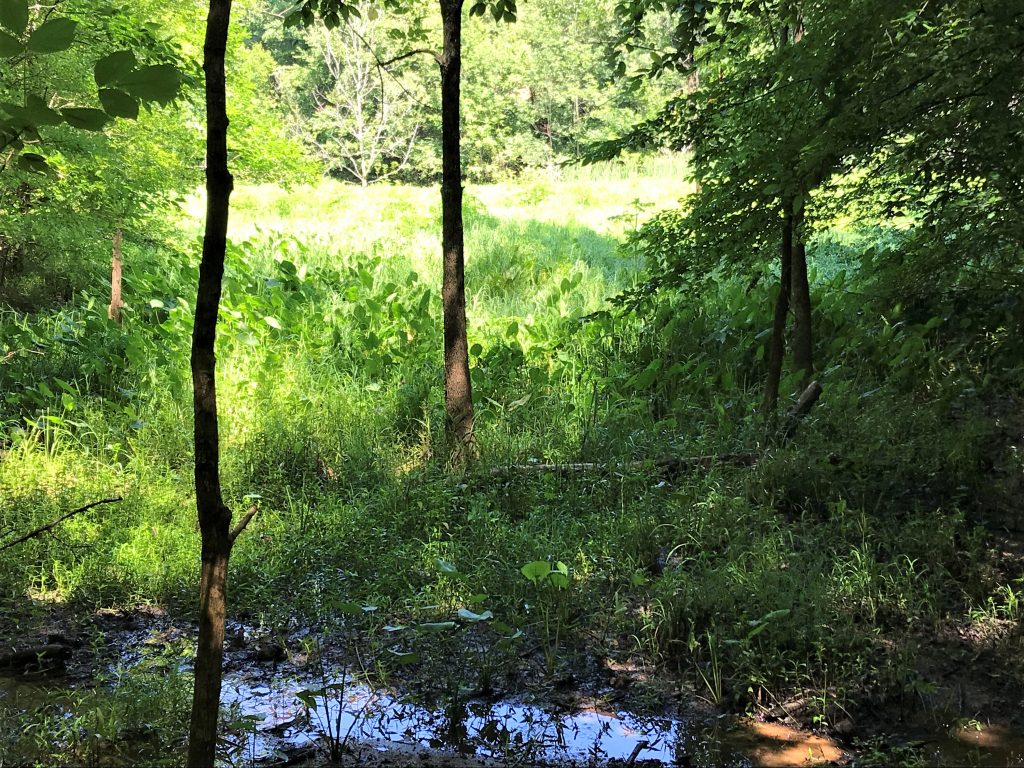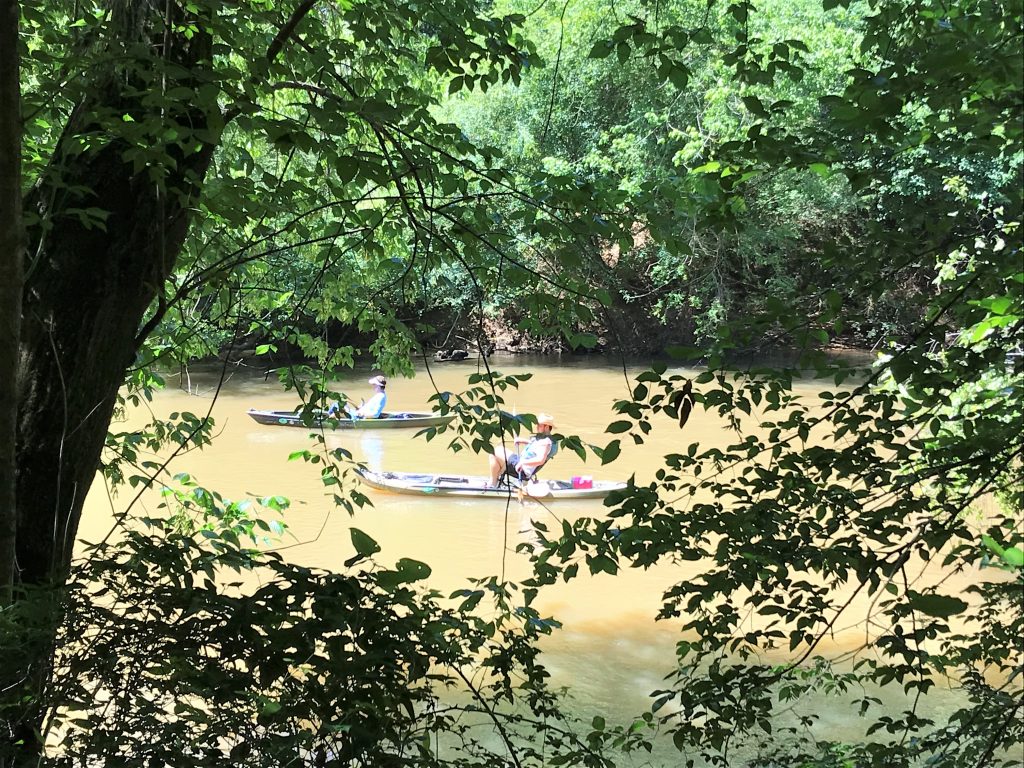Known for the Univerisity of Georgia (UGA) and all things “Dawgs,” Athens lies about 70 miles east of Atlanta. While touring the campus a few weeks ago, we stumbled upon the State Botanical Garden of Georgia.
Founded in 1968 by UGA, the 313-acre offers a “living laboratory” of nature on the outskirts of town. Better yet, admission and parking are free!
Nature Trails
We first started out by taking the Orange trail near the parking lot. The path dove into a forest with plenty of shade. Shortly afterwards, a gentle brook flowed on our right side.
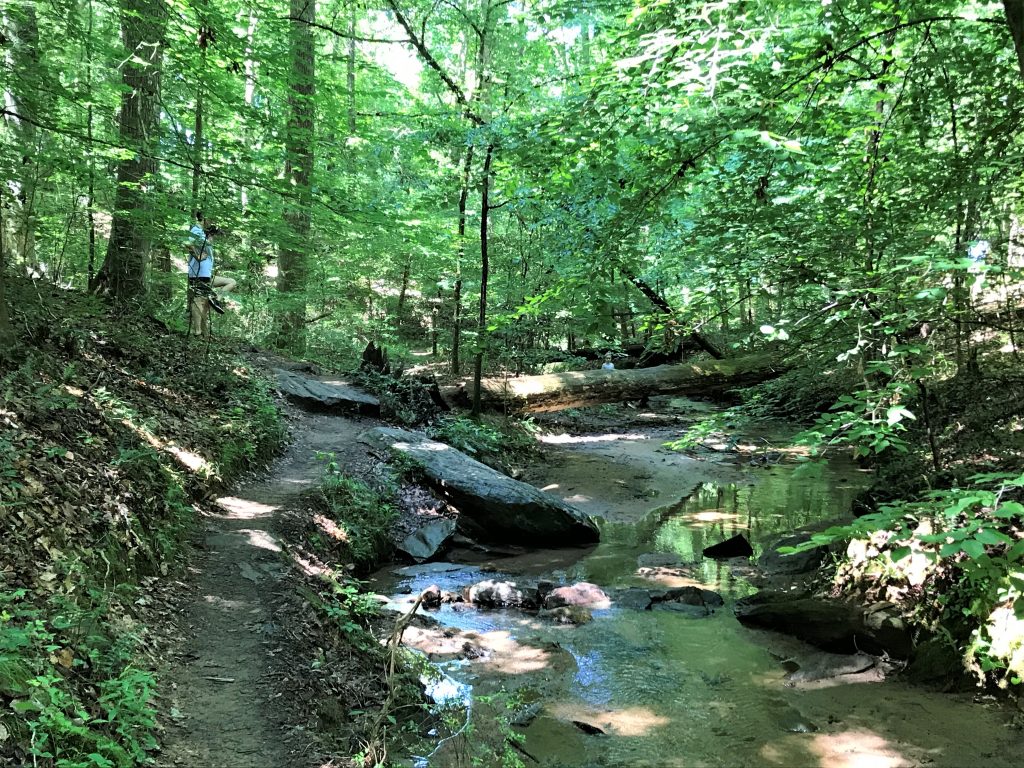
Soon the trail passed by a large grassy meadow and wetlands before ending at the Oconee River. Taking a right turn, we followed along the banks of the river while watching several kayakers float by. At the river, the purple trail led to the Flower Garden, but we opted to continue on the orange trail to its completion of 1.2 miles.
As the orange trail departed the river and headed back uphill, it intersected with the white trail, which winds 3.2 miles on the western edge of the property. Turning towards the gardens, we passed an administrative building and spotted what looked like a giant hammock in the distance.
The Gardens
We got closer and realized it was one of the play structures in the Children’s Garden. Although closed due to COVID restrictions, the 2.5 acre garden was completed last year offering a fun learning environment for kids. I found it hard to resist the urge to sneak in to play in the giant treehouse! A steel archway took us past sculptures of children to the main part of the gardens.
The cool blast of air conditioning felt great when we walked into the gift shop at the Alice Hand Callaway Visitor Center. Clearly the center of garden activity, they closed the rest of the visitor center, including a cafe and a conservatory housing tropical plants, due to COVID restrictions. However, we picked up a map of the grounds and explored more of the outdoor spaces.
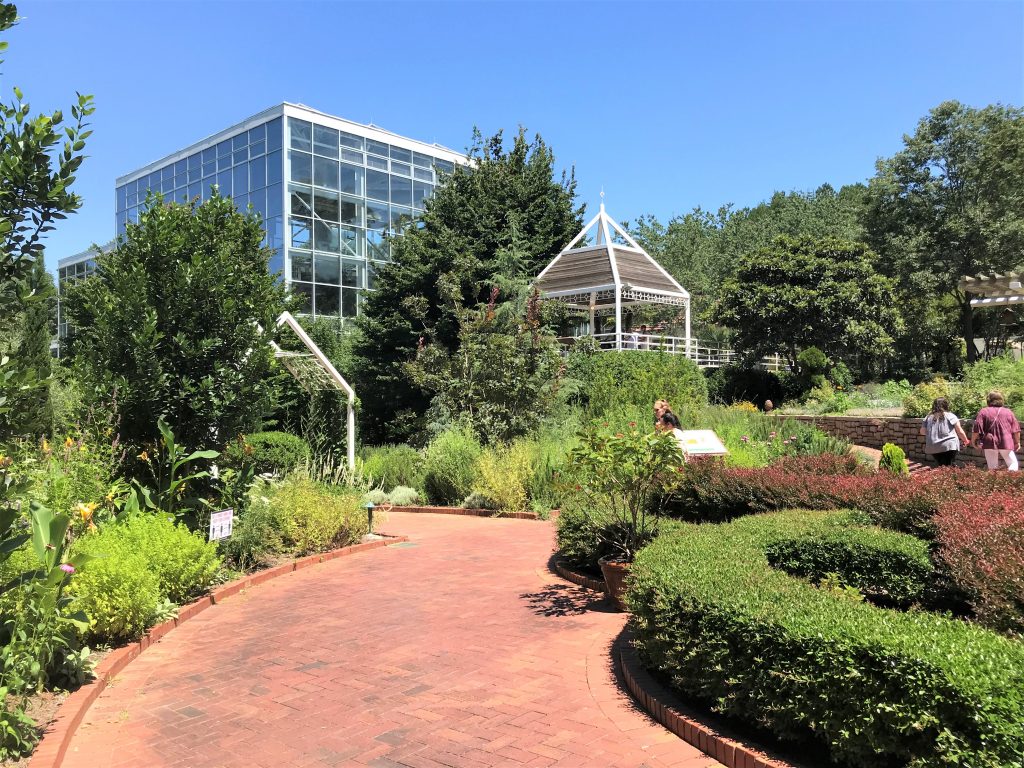
The State Botanical Gardens of Georgia divides the garden area into several smaller gardens with different focuses. A floral-lined bridge took us to the International Garden with sections devoted to a shady, Chinese-style garden and a formal, Italiante-style garden. The Herb and Physic garden spotlighted ancient medicinal remedies. We spent most of our time exploring the Heritage Garden and Flower Garden.
Heritage Garden
The Heritage Garden featured plants native to Colonial Georgia. In one section, the area resembled a farm growing crops, while another area showcased heirloom plants and surrounded a fountain with a sculpted heron.
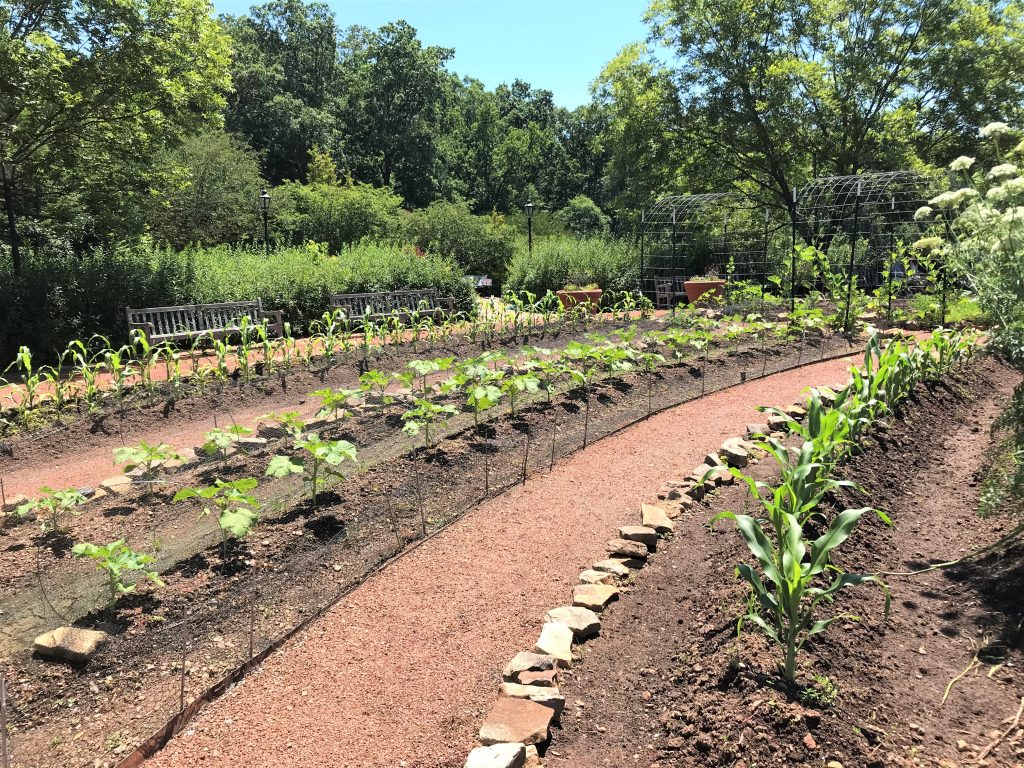
Flower Garden
We could have spent an hour in the Flower Garden. A hillside terrace of roses led us down to a manicured grassy lawn area with sculptures and benches.
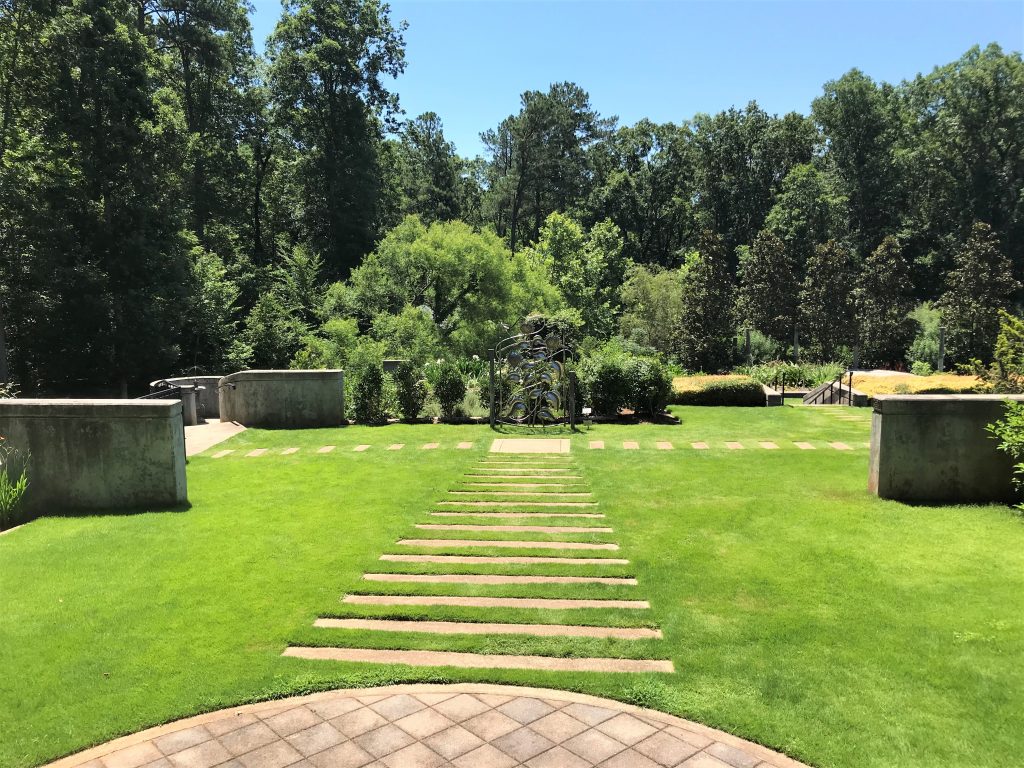
From there, we wound our way through garden “rooms” of perennials and annuals. One area teemed with Irises, while Calla Lilies lit up another section. A mulched area surrounding ferns provided a shady area to sit for a few minutes before we crossed a wooden bridge leading out of the Flower Garden.
A trail took us past large Magnolia trees to the Day Chapel. Nestled in the woods, the spot is popular for weddings. Before reaching the parking lot, we passed the red-brick headquarters building of the Garden Club of Georgia which hosts numerous symposiums and gardening workshops.
Conclusion
The State Botanical Gardens of Georgia packs so much into its 300 acres. From the hiking trails to the themed gardens, we saw a variety of different gardening styles. Unfortunately, we didn’t have time to walk through the Shade & Native Flora Garden but we will save that and some of the other trails for another time.

The state of Georgia is truly interconnected. The visitor center is named after Alice Hand Callaway of Hills & Dales Estate in Lagrange, Georgia. Alice’s sister was Virginia Hand Callaway, wife of Cason J. Callaway of Callaway Gardens. (Cason Callaway was the nephew of Alice’s husband Fuller Earle Callaway.) You can click on the links to see my posts about those places. On top of that, both the Day Chapel and the Cecil B. Day Butterfly Center at Callaway Gardens were named for Cecil B. Day, the founder of Days Inn.
Except for the hiking trails, most of the gardens are in the sun. Plan to wear sunscreen and prepare for hot temperatures in the summer. For more information about the State Botanical Garden of Georgia, visit their website here.
